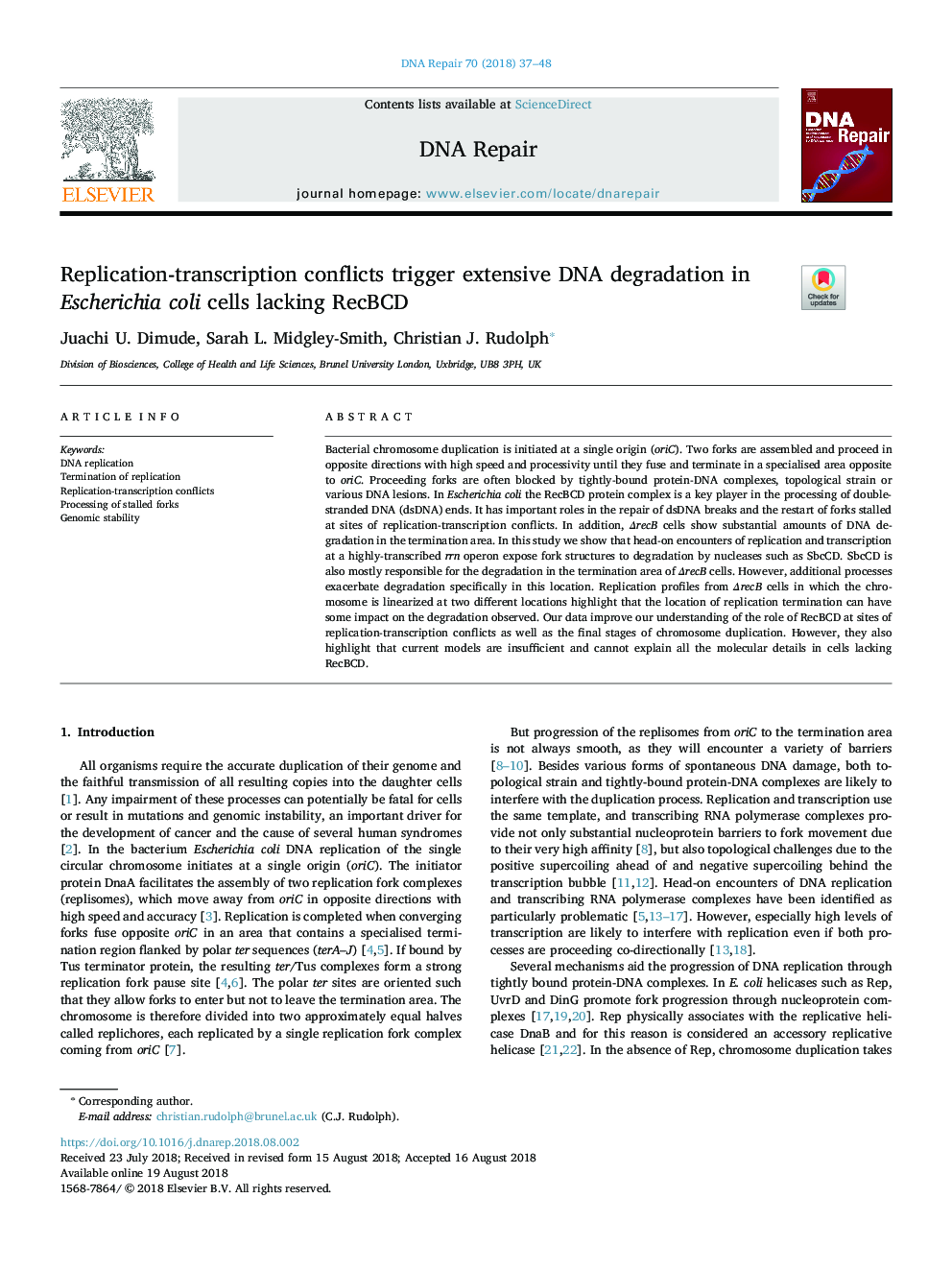| Article ID | Journal | Published Year | Pages | File Type |
|---|---|---|---|---|
| 9954139 | DNA Repair | 2018 | 12 Pages |
Abstract
Bacterial chromosome duplication is initiated at a single origin (oriC). Two forks are assembled and proceed in opposite directions with high speed and processivity until they fuse and terminate in a specialised area opposite to oriC. Proceeding forks are often blocked by tightly-bound protein-DNA complexes, topological strain or various DNA lesions. In Escherichia coli the RecBCD protein complex is a key player in the processing of double-stranded DNA (dsDNA) ends. It has important roles in the repair of dsDNA breaks and the restart of forks stalled at sites of replication-transcription conflicts. In addition, ÎrecB cells show substantial amounts of DNA degradation in the termination area. In this study we show that head-on encounters of replication and transcription at a highly-transcribed rrn operon expose fork structures to degradation by nucleases such as SbcCD. SbcCD is also mostly responsible for the degradation in the termination area of ÎrecB cells. However, additional processes exacerbate degradation specifically in this location. Replication profiles from ÎrecB cells in which the chromosome is linearized at two different locations highlight that the location of replication termination can have some impact on the degradation observed. Our data improve our understanding of the role of RecBCD at sites of replication-transcription conflicts as well as the final stages of chromosome duplication. However, they also highlight that current models are insufficient and cannot explain all the molecular details in cells lacking RecBCD.
Keywords
Related Topics
Life Sciences
Biochemistry, Genetics and Molecular Biology
Biochemistry
Authors
Juachi U. Dimude, Sarah L. Midgley-Smith, Christian J. Rudolph,
